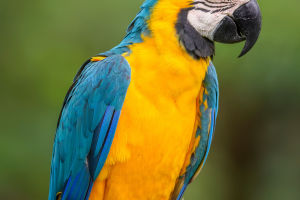Hello, Lykkers! Have you ever caught a glimpse of a white-tailed deer darting gracefully through the forest?
We certainly have, and it's a sight that leaves us in awe every time. Join us as we explore the world of these gentle creatures and learn some fascinating facts along the way.
1. Iconic White Tail
One of the most distinctive features of the white-tailed deer is, of course, its white underside of the tail. When threatened, they raise their tail to signal other deer of potential danger, creating a flash of white as they bound away. It's a unique sight and a natural warning system that helps them stay safe in the wild.
2. Seasonal Coat Changes
We learned that these deer actually change coats with the seasons! During the warmer months, they have a reddish-brown coat, which provides great camouflage in lush environments. As winter approaches, their coat turns a grayish-brown, blending with the bare trees and snow, offering additional protection.
3. Skilled Jumpers and Swimmers
White-tailed deer are known for their athletic abilities. They can jump as high as eight feet in a single bound and swim across rivers if needed. This agility helps them evade predators and traverse varied landscapes with ease.
4. Excellent Sense of Smell
White-tailed deer have an extraordinary sense of smell. We noticed that they can detect scents from great distances, allowing them to sense predators or food sources well before seeing them. Their sense of smell, along with keen hearing, is key to their survival.
5. Herbivorous Diet
White-tailed deer are herbivores, and their diet changes with the seasons. In the spring and summer, they eat a variety of plants, including leaves and grass. In winter, they rely on twigs, bark, and acorns, adapting to the available food sources.
6. Social Yet Solitary
While these deer are social animals, forming small groups in the winter, they're also comfortable being alone. Females tend to stay in family groups with their young, while males are more solitary, especially outside of the mating season.
7. Lifespan in the Wild
In the wild, white-tailed deer have a lifespan of about 4 to 5 years, though some can live longer if they avoid predators and disease. This relatively short lifespan makes them one of nature's more transient visitors, yet they leave a lasting impact on their ecosystems.
8. Important Role in the Ecosystem
White-tailed deer play an essential role in their ecosystem. By browsing on plants, they help shape the forest structure and support other species. As prey animals, they are also a vital food source for predators, helping to maintain a balanced environment.
Exploring Their World
White-tailed deer offer a beautiful glimpse into the balance of nature. Their natural adaptations, from seasonal camouflage to graceful speed, remind us how wildlife thrives in harmony with its surroundings. Next time we encounter these gentle creatures, we'll appreciate not only their beauty but also their resilience and importance in the wild.


